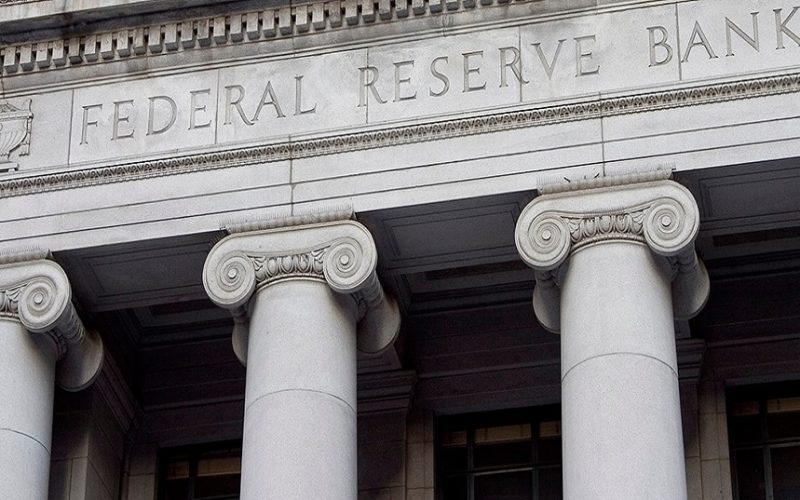by Brian Wesbury, Chief Economist, & Robert Stein, Deputy Chief Economist, First Trust Portfolios
If the financial markets have a religion, we think we know what it is: a deep and abiding faith in the ability of an omniscient Federal Reserve to ride to the rescue if and when the economic weather turns bad.
It’s hard to tell exactly where the economy is right now, but it’s very unlikely to be in a recession or need a rescue yet. The Atlanta Fed’s GDP Now model is tracking 3.3% annualized growth in the second quarter, while our models suggest a growth rate of 2.5%. Both of these are above the 20-year average growth rate of 2.0%.
However, not all the economic signs are as positive. The ISM Services index came in at 49.4 in April, the first reading below 50.0 since December 2022. The business activity component, at 50.9, was the lowest since the onset of COVID in 2020. This is important to us because readings below 50 signal contraction. The ISM Manufacturing index came in at 49.2, the seventeenth month below 50.0 in the past eighteen months.
During COVID, services were locked down in many states for a long time, with many of those workers receiving checks from the government, which they in turn spent on goods. Since opening up, goods have been weak, while services have recovered. That process appears complete now, and the dip in services could signal problems.
It could also be why the labor market lost at least a little bit of luster in April, with slower job growth, slower wage growth, and fewer hours worked. Nonfarm payrolls grew 175,000 for the month, less than the 225,000 the consensus expected.
We like to follow payrolls excluding government (because it's not the private sector), education & health services (because it rises for structural and demographic reasons, and usually doesn’t decline even in recession years), and leisure & hospitality (which is still recovering from COVID Lockdowns). That “core” measure of payrolls rose a modest 67,000 in April, the slowest pace so far this year.
There are two measures of total jobs. One survey (which gave us the data we just mentioned for nonfarm payrolls) looks at existing establishments. The other measures civilian employment by talking directly to workers. It will catch self-employment and small-business start-ups. Last month this measure increased a weak 25,000 (and unemployment rose to 3.9%). Over the past year civilian employment is up 500,000 versus 2.8 million new jobs counted by the payroll survey. This divergence has happened before, but it is still slightly worrisome.
Nothing in the April jobs report suggest a recession, but it’s certainly a move in a more tepid direction versus the prior path of the labor market.
In the meantime, the Fed, as well as market expectations of what the Fed will do, keep bouncing around. On Wednesday the Fed made it clear that, in response to a string of relatively high inflation readings, the bar to cutting rates anytime soon (at least until July) is very high. Why? Consumer prices are up 3.5% in the year ending March, an acceleration from the 3.0% in the year ending in June 2023. Lack of progress on inflation makes it difficult for the Fed to justify rate cuts.
The Fed thinks the stance of monetary policy is already tight enough to eventually bring PCE inflation (its preferred measure) down to its 2.0% target, it’s just taking longer than previously expected.
In fact, the Fed must believe it is making progress on inflation because it announced that it would soon slow the pace of Quantitative Tightening. It will now reduce its portfolio of Treasury securities by $25 billion per month starting in June, less than half the previous rate of $60 billion per month since mid-2022. The Fed didn’t change the rate of reduction in mortgage-related securities, holding that target to “up to $35 billion per month,” which makes sense because paydowns have slowed with higher mortgage rates.
In effect, the Fed is moving toward a loosening of monetary policy, even as the Fed claims to be determined to fight inflation. No wonder the expectations surrounding shifts in short-term interest rates this year have bounced around so much, with the Fed thinking of its balance sheet, the money supply, and short-term rates as separate and distinct tools.
Ultimately, if the Fed is going to be successful on inflation, it’s going to need a monetary policy that’s tight enough to hurt real economic growth, as well. That should scare the stock market, and yet the stock market as a whole remains lofty relative to interest rates and profits. This only makes sense if investors believe the Fed will be able to react quickly to economic weakness once it kicks in, without reigniting inflation. Count us skeptical.
Brian S. Wesbury – Chief Economist
Robert Stein, CFA – Deputy Chief Economist
Click here for a PDF version
Copyright © First Trust Portfolios















